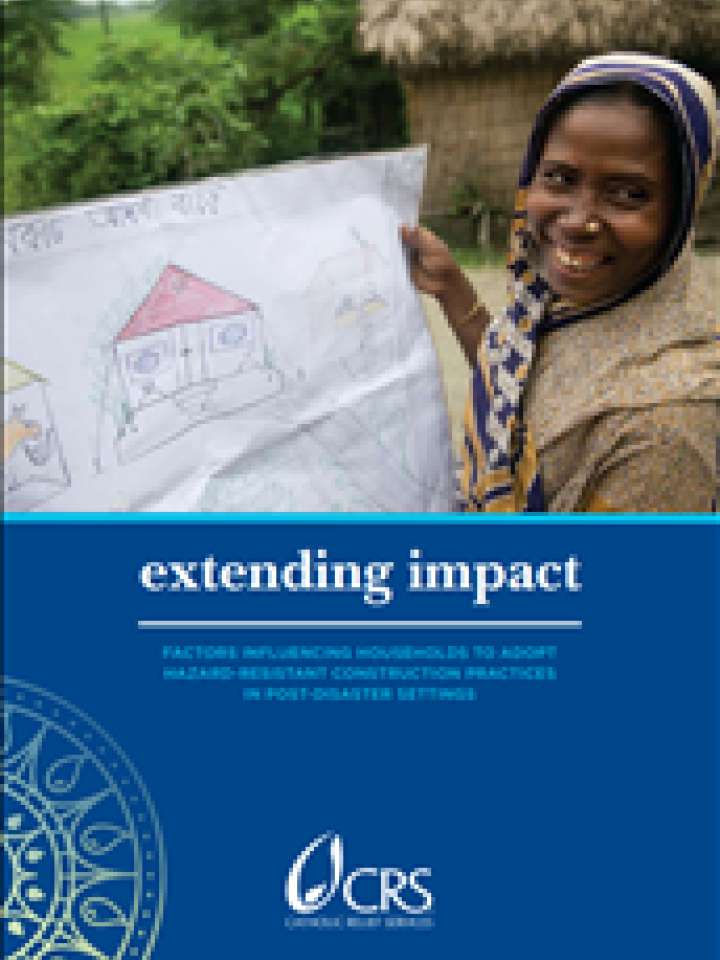Extending impact: Factors influencing households to adopt hazard‑resistant construction practices in post‑disaster settings
This report describes a multi-country study conducted by the Catholic Relief Services (CRS) on people’s perceptions of using CRS‑recommended hazard‑resistant construction practices. The study involved communities in five countries where CRS had implemented post-disaster reconstruction projects in the last six years: Bangladesh, India, Pakistan, the Philippines and Madagascar.
The findings of this study present an uncommon perspective on what determines the choices people make during reconstruction and how more people might be encouraged to adopt hazard-resistant construction practices of their own accord. By sharing these findings and related recommendations, CRS aims to deepen understanding of what constrains, motivates and enables people to make such choices, and to inspire organizations working with communities at risk of disasters to explore new ways to approach resilience-building.
One of the greatest challenges of post-disaster housing reconstruction is the sheer scale of destruction and the resources required for recovery efforts. In the past decade, over 25 million people have been made homeless by disasters2, but only a fraction of them became beneficiaries of reconstruction programs. Although beneficiary selection criteria must be established to fit the funding parameters of any program, there are typically many with limited capacities who also need assistance to reconstruct their homes, but who do not receive it.
Over the past decade, CRS has supported 165,0003 vulnerable families in disaster‑affected communities to reconstruct their homes using specific construction practices that can better withstand cyclones, earthquakes, floods and other hazards. CRS field staff of those reconstruction programs observed that, in the same disaster affected locations, women and men who were not beneficiaries of CRS programs were copying some of the CRS-promoted hazard‑resistant construction practices as they rebuilt their homes using their own resources. As a result, CRS embarked on this multi-country study to better understand the motivations, barriers and enabling factors that contribute to people’s decisions to use hazard‑resistant practices when they reconstruct after a disaster. The findings could be among the keys to designing community-led programs that foster resilience on a much greater scale than can be generated by any single project.
